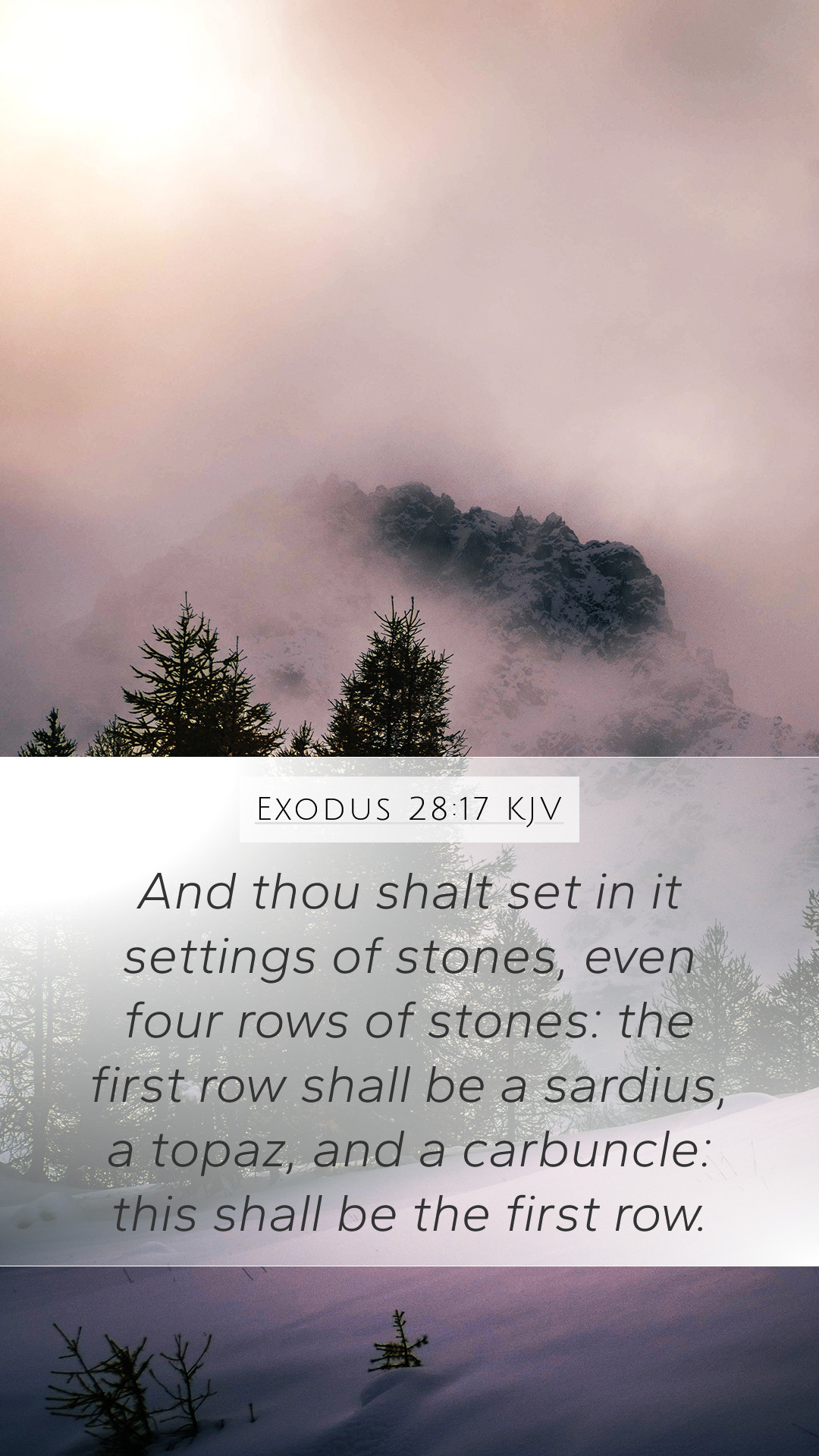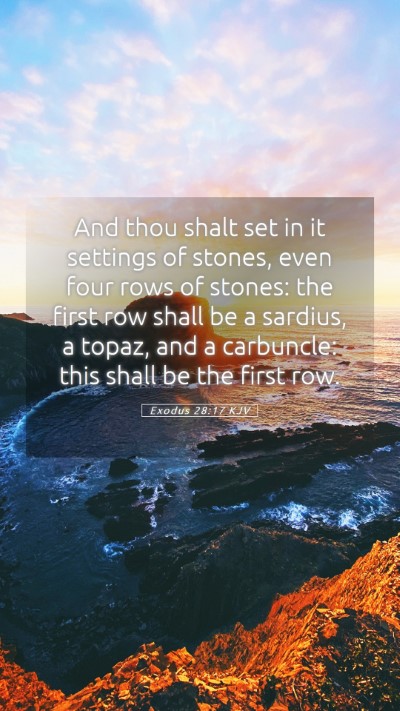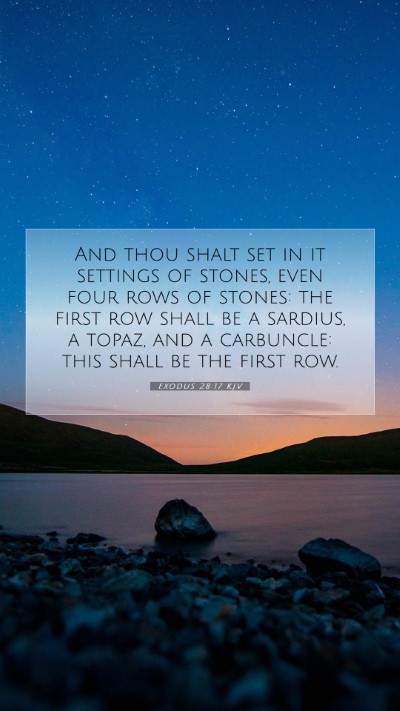Understanding Exodus 28:17
Exodus 28:17 states, "And you shall set in it four rows of stones; a row of sardius, topaz, and carbuncle shall be the first row." This verse is part of God's directive to Moses regarding the priestly garments for Aaron. It describes the breastplate that the high priest was to wear, adorned with precious stones, each of which held individual significance.
Bible Verse Meanings and Interpretations
The meaning of this Bible verse can be interpreted through a variety of lenses, combining insights from multiple public domain commentaries. Here are the main points:
-
Symbol of Judgment and Authority
Matthew Henry's commentary emphasizes that these stones represent a visual manifestation of God's presence among His people. Each stone’s color and brilliance serve to represent various tribes of Israel, symbolizing God's judgment and authority over them.
-
Representatives of the Tribes of Israel
Albert Barnes notes that the stones correspond to the names of the twelve tribes engraved upon them. This connection symbolizes that the high priest carried the names of the tribes with him before God, illustrating intercession and representation.
-
Spiritual Significance
Adam Clarke points out the importance of these materials not only for their physical beauty but as an intrinsic symbol of God's covenant with Israel. The precious stones showcase the value of spiritual commitment, highlighting that being in communion with God is of utmost worth.
Scripture Analysis and Historical Context
This passage is located within the broader context of Israelite worship and priestly conduct as prescribed in the Old Testament. Understanding Scripture in this vein requires a look into:
-
The Role of the High Priest
The high priest served as the mediator between God and the Israelites, emphasizing the need for representation in spiritual matters. Each stone's placement and meaning emphasized the gravity of this intercessory role.
-
Covenantal Significance
Further examination of this passage through biblical exegesis reveals that the breastplate's design was a physical representation of the covenant God made with His people, showcasing His commitment and their obligations.
-
An Example for Worship
This configuration serves as an example for worship practices in subsequent generations, pointing to the reverence and careful attention that must be given to how one approaches God.
Application of Bible Verse
When reflecting on how to apply this verse to daily life, consider the following:
-
Importance of Representation
Just as the high priest bore the names of the tribes, believers today are called to represent Christ in their communities, carrying the message of the Gospel to others.
-
Value of Intercessory Prayer
The act of praying for others is crucial, echoing the high priest's responsibilities. It encourages involvement in both personal and collective spiritual practices.
-
Acknowledgment of God’s Presence
This verse reminds believers to recognize God's abiding presence in their lives, leading to worship that values God’s holiness and presence with reverence.
Bible Cross References
For deeper understanding of Exodus 28:17, you may also consider the following cross references:
- Exodus 28:15-30: The complete instructions for the breastplate and its significance.
- Leviticus 8:6-9: The ordination of Aaron and his sons, establishing their priestly roles.
- Revelation 21:19-21: The foundation of the New Jerusalem adorned with precious stones, reflects God's glory and majesty.
Bible Study Insights
This passage provides rich material for Bible study groups or online Bible study sessions. Utilizing Bible study tools can enhance understanding and application of this verse. Here are some recommended approaches:
-
Group Discussions:
Facilitating discussions around the significance of stones in Scripture can lead to deeper insights into God's purpose for His people.
-
Interactive Lessons:
Encouraging participants to explore the meanings behind each of the stones mentioned can foster engagement and personal connection to the text.
-
Research Historical Context:
Studying the ancient Near Eastern customs related to priesthood can deepen the understanding of the text.
Conclusion
Exodus 28:17 encompasses profound meanings woven through priestly duty, representation, and God's covenant. Engaging with this verse through various Bible study resources enriches the interpretation, allowing believers to apply these timeless truths to modern life.


